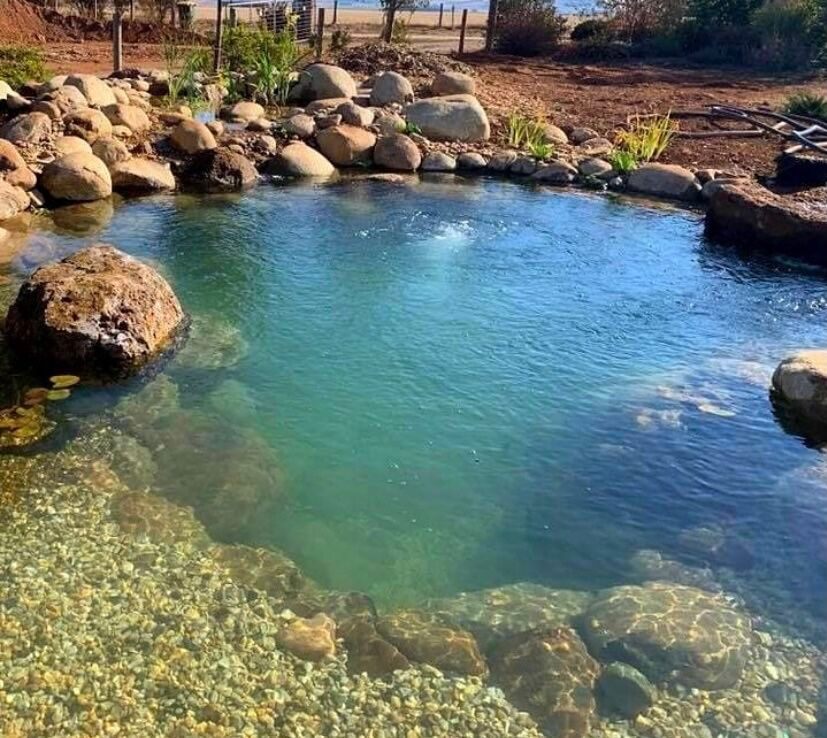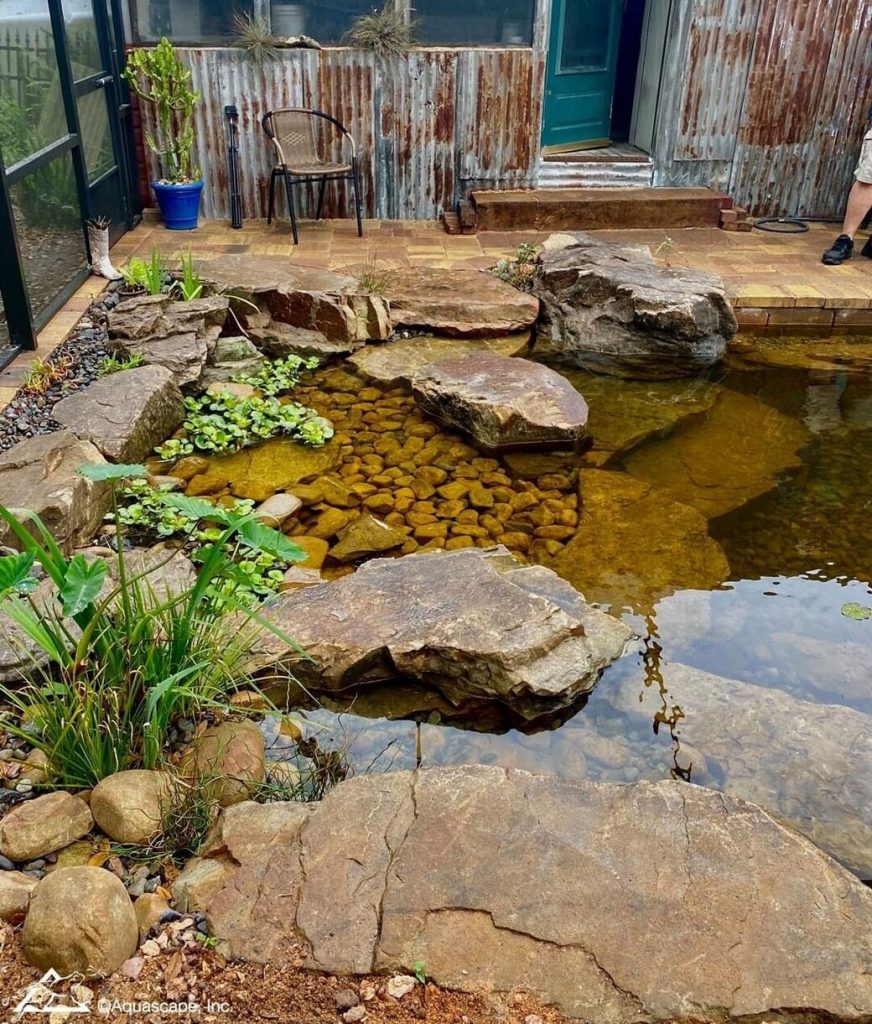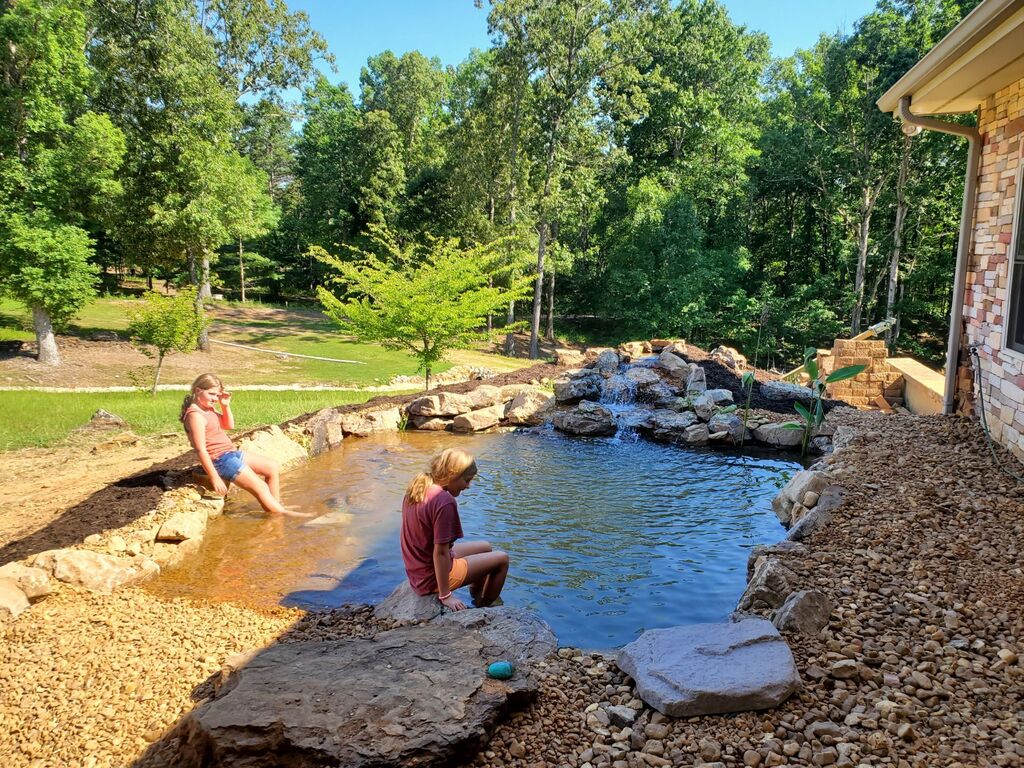Natural swimming pools are a great example of a shift among homeowners to move towards more natural, holistic home environments, as an alternative to a traditional swimming pool. They have become increasingly popular in recent years—and for good reason! They’re beautiful, eco-friendly, and can be an affordable option as opposed to conventional pools. But before you dive in (pun intended), there are some things you need to know. This article will teach you everything you need to know about natural swimming pools (also called natural swimming ponds or recreation ponds) and if installing one in your backyard is right for you. So read on, and get ready to take the plunge!
What Are Natural Swimming Pools?

A natural swimming pool (NSP) is, simply put, a pool that uses no chemicals—not even chlorine. It instead uses nature to filter the water, removing the need for harsh chemicals. The water in a natural swimming pool is clean and clear, thanks to plants and other natural filtration systems.
Typically, an NSP will have two parts: a swimming area and a plant-filtered regeneration zone. The regeneration zone is where the water is filtered and purified. Water is pumped from the swimming area into the regeneration zone, where it flows through a bed of gravel and plants. The aquatic plants remove impurities from the water, and the gravel provides a home for beneficial bacteria.
These bacteria break down contaminants, further purifying the water. The clean water is then returned to the swimming area. The key components of a natural swimming pool are the filtration system (which may include plants, rocks, gravel, sand, and other natural materials) and the pump (which circulates the water through the filtration system), which is why it can also be referred to as a swimming pond or a recreation pond.
Because they rely on natural processes, NSPs are often described as “living pools.” Not only do they provide a place to swim, but they also support a diverse ecosystem of plants and animals.
The Pros and Cons of Natural Swimming Pools
One of the biggest draws to natural pools is the desire to ditch harsh chemicals often used to maintain traditional swimming pools. Natural swimming pools (also called natural pools, swimming ponds, recreation ponds, or eco-pools) use plants, rather than chemicals, to purify the water.
Also known as a biologic pool, this type of pool is designed to recycle and clean the water using plants and other natural methods. This usually requires a certain level of upkeep but is often considered a worthwhile component of natural pools. Let’s look at some other advantages, and disadvantages, of a natural swimming pool.
The Benefits of A Natural Swimming Pool

First off, they are better for the environment, since they don’t rely on harsh chemicals to maintain water quality. They rely on plants and other natural filters and filtration systems in vegetation to keep the water clean.
Secondly, they can be less expensive to operate. You’ll save by not having to spend money on chemicals, and they use less water than traditional pools since evaporation is minimized. They also use far less energy than traditional pools because they rely on plants to filter the water, rather than pumps and filters.
Thirdly, many people find that natural swimming pools provide a more pleasant swimming experience since the water is fresh and clean feeling. Natural swimming pools often blend in seamlessly with their surroundings, resulting in a more aesthetically pleasing backyard.
And lastly, The plant life in a natural pool helps to improve water quality by absorbing excess nutrients. They provide a haven for local wildlife and can even help save water in drought-prone areas.
The Negatives of A Natural Swimming Pool
On the negative side, NSPs require more maintenance than traditional chemically treated pools. You’ll need to skim leaves and other debris from the surface of the water more often. The plants in the pool will need to be monitored and trimmed regularly, and the gravel will need to be cleaned periodically.
In addition, NSPs can be difficult to keep clean during peak swim season; if there are a lot of people using the pool, you may need to shock it with some sort of chemical once in a while to keep things under control if you experience a lot of high use. This would just be to assist in cleaning and regulating the pool.
Natural pools can also be susceptible to algae growth, particularly in warm weather. While algae can be controlled with proper filtration and circulation, it is important to be aware of this potential issue.
Finally, NSPs can be tricky to build; it’s important to work with a qualified professional to make sure things are done right.
Overall, natural swimming pools have both pros and cons. Weighing these factors will help you decide if an NSP is right for you and your family.
The Maintenance and Care of a Natural Swimming Pool

A natural swimming pool is a beautiful alternative to a traditional chlorinated pool, and with the right care, it can be low-maintenance as well! Unlike chemical pools, natural pools rely on plants and other natural elements to keep the water clean. As a result, they are much better for the environment and your skin! However, natural pools do require some basic maintenance in order to stay clean and safe.
The first step is to test the water pH and adjust it as needed. This can be done with a simple pH test kit from your local pool supply store. The ideal pH level for a natural pool is 7.2-7.6, so you want to make sure you’re staying within this range.
Next, Inspect the plants regularly to make sure they are healthy and not overgrown. Remove any dead leaves or blooms to prevent them from decomposing in the pool.
You may also need to shock the pool with a sanitizer. This should be done on a weekly basis, or more often if the pool is used frequently. Shocking the pool will help to kill any bacteria that may be present in the water, without having to keep it constantly full of harsh chemicals.
Finally, you will need to skim the surface of the pool regularly to remove any debris that may have fallen in. Here in Memphis, as summer ends and fall sets in, and leaves start to fall, this may need to become a daily habit to ensure your pool is clean.
By following these simple steps, you can maintain a natural swimming pool with minimal effort. In addition, natural swimming pools are an environmentally friendly choice that will save you money in the long run.
Tips for Swimmers in a Natural Swimming Pool

Since natural swimming pools are, as the name suggests, a natural environment, some special care needs to be taken when using them for swimming to keep the environment in top condition. Natural pool owners will most likely want to take extra care, so here are some of Midsouth Ponds’ tips for swimming in a natural swimming pool:
1. Don’t use soap or shampoo in the pool; they can pollute the water and harm the natural ecosystem.
2. Rinse off before entering the pool to remove any dirt, debris, or chemicals from your body.
3. Swim only in designated areas to avoid disturbing plant life or harming wildlife.
4. Don’t dive or jump into the pool; this can stir up sediment and make the water cloudy.
5. Most natural pool designs contain natural materials to give off a certain type of aesthetic environment. Use caution when swimming near submerged rocks or other obstacles; they can be slippery and dangerous.
6. Avoid swimming during storms or when the water is murky; this can increase your risk of getting hurt or sick.
7. Be aware of your surroundings at all times; natural swimming pools can attract wildlife. Enjoy your little aquatic friends but be careful!
Following these simple tips, you can enjoy a safe and enjoyable swim in a natural swimming hole!
A natural swimming pool is a great option for those who want to enjoy all the benefits of swimming without any of the negatives. They are also a good choice for people who want an eco-friendly option that doesn’t require as much maintenance as other types of pools. For more information, fill out our contact form today!



